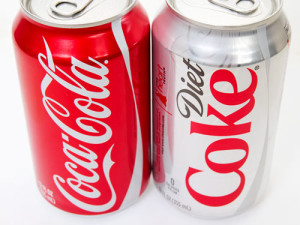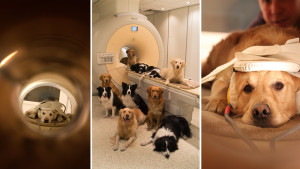After discussing sugary drinks in class, I wanted to focus a post on diet versus regular. Most people are under the impression that diet soda is better than regular. They simply read the label rather than consider what differences are in each can. I have a friend who drinks diet soda nearly every single day, and she believes that it is OK because it is diet. They believe that the zero calories and zero sugars labels make them healthier. I became interested in whether or not diet soda really is “better” for you. I for one do not drink soda at all. My mother was quick to inform me of all of the negative health benefits of soda. It is one of the worst beverages to consume due to its high levels of fructose corn syrup and sugars. We also discussed in class that sugary drinks are more likely to lead to weight gain so it is better to avoid them altogether.
Many people seek a diet soda rather than a regular one because they want to maintain a healthier diet. However, diet soda still has many negative consequences and has not yet proven to be better. It is considered to be diet because of the altered ingredients. Rather than added sugars, diet contains artificial sweeteners. Weight gain has been associated with diet soda because the body starts to crave the real sugars that are in regular soda. People eat and drink more fattening foods to fulfill these cravings. A study published online by Nature showed that artificial sweeteners tend to cause glucose intolerance, as well. They cause an exaggerated elevation in blood glucose levels which people try to prevent by consuming these sweeteners.
Furthermore, researchers at the University of Miami found that there was a positive correlation between a person’s consumption of diet soda and possibility of having a heart attack or stroke. 2,465 people were followed for nine years and asked to document what beverages they were consuming. Those that drank diet soda were 48% more likely to have a heart attack or stroke than those who drank regular soda. There are many other confounding variables that need to be taken into consideration when looking into this study. The medical history for example of each individual. Some may have strokes or heart attacks run in their families which would make them more susceptible to having one. Gender may also affect the study; one may already have a higher chance. The study cannot conclude that diet is worse, but it supports the claim that it is not a better alternative like we may have thought.
To conclude, we cannot state with full certainty whether or not diet soda is better or worse than regular. Studies have shown that the artificial flavoring results in an increased desire to consume fattening foods which leads to weight gain. Severe health problems such as stroke and heart attack have also been associated with these beverages. There are pros and cons to consuming one over the other. However, it can be stated that they do not have much health benefit, and therefore it would be best not to consume soda at all or in slim moderation.









 smallest movements could be an indicator that the person is trying to hide something. We are all guilty of
smallest movements could be an indicator that the person is trying to hide something. We are all guilty of 



 wonder why our noses can just start to bleed. Well, it turns out that there are two types of
wonder why our noses can just start to bleed. Well, it turns out that there are two types of










 Growing up, I was forced to wear a bike helmet by my parents and the law. In Pennsylvania, kids under the age of twelve must wear helmets. The reasoning behind wearing a helmet is to reduce risk of head injury in the event of an accident, but like many people, however, I have a distaste for helmets because it ruins my hair. I rarely ride my bike around campus
Growing up, I was forced to wear a bike helmet by my parents and the law. In Pennsylvania, kids under the age of twelve must wear helmets. The reasoning behind wearing a helmet is to reduce risk of head injury in the event of an accident, but like many people, however, I have a distaste for helmets because it ruins my hair. I rarely ride my bike around campus
